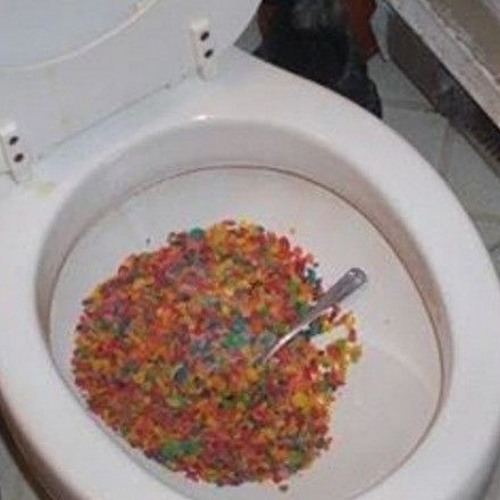Were you searching for related information concerning Is it safe to flush food (especially rice) down the toilet??

Intro
Many people are commonly confronted with the predicament of what to do with food waste, specifically when it pertains to leftovers or scraps. One common question that emerges is whether it's all right to flush food down the toilet. In this write-up, we'll delve into the reasons why people could think about flushing food, the repercussions of doing so, and alternative techniques for proper disposal.
Reasons people may take into consideration purging food
Absence of awareness
Some people might not recognize the potential damage caused by purging food down the bathroom. They might erroneously think that it's a harmless method.
Ease
Flushing food down the bathroom may seem like a quick and very easy solution to taking care of undesirable scraps, especially when there's no neighboring trash bin offered.
Idleness
Sometimes, people might merely pick to flush food out of large laziness, without taking into consideration the consequences of their actions.
Consequences of flushing food down the bathroom
Environmental impact
Food waste that winds up in waterways can contribute to air pollution and damage aquatic communities. Furthermore, the water used to flush food can stress water sources.
Plumbing issues
Flushing food can result in stopped up pipes and drains pipes, triggering pricey plumbing repair services and aggravations.
Types of food that should not be purged
Coarse foods
Foods with coarse textures such as celery or corn husks can get tangled in pipelines and create obstructions.
Starchy foods
Starchy foods like pasta and rice can take in water and swell, leading to blockages in pipes.
Oils and fats
Greasy foods like bacon or cooking oils need to never ever be flushed down the bathroom as they can solidify and create obstructions.
Correct disposal techniques for food waste
Utilizing a garbage disposal
For homes outfitted with garbage disposals, food scraps can be ground up and purged through the plumbing system. Nonetheless, not all foods are suitable for disposal in this way.
Recycling
Specific food packaging products can be recycled, lowering waste and minimizing ecological impact.
Composting
Composting is a green method to get rid of food waste. Organic products can be composted and used to enhance soil for horticulture.
The relevance of appropriate waste management
Reducing environmental damage
Appropriate waste monitoring methods, such as composting and recycling, help minimize air pollution and preserve natural deposits for future generations.
Securing pipes systems
By staying clear of the technique of flushing food down the commode, property owners can stop pricey plumbing repair work and preserve the honesty of their pipes systems.
Final thought
Finally, while it might be appealing to purge food down the toilet for ease, it's important to understand the possible effects of this action. By embracing appropriate waste administration techniques and getting rid of food waste responsibly, people can contribute to healthier pipes systems and a cleaner atmosphere for all.
FLUSH FOOD DOWN THE TOILET?
FLUSHING FOOD CAN CAUSE BLOCKED DRAINS IN YOUR HOME
All of the plumbing fixtures in your home are connected to the same sewer pipe outside of your home. This outdoor sewer pipe is responsible for transporting all the wastewater from your home to the Council sewer mains. Even small pieces of food that go down the kitchen sink can cause problems for your sewer. It should therefore be obvious that flushing larger bits of food, such as meat, risks a clog in either the toilet itself or the sewer pipes. Flushing greasy food is even more problematic because oil coagulates when it cools, coating the interior lining of your pipes.
THE TOILET IS NOT A BIN
Food isn’t the only thing that people shouldn’t be flushing down the toilet. People use the toilet to dispose of all kinds of things such as tampons, makeup wipes, dental floss, kitty litter and even underwear. Water goes to great lengths to educate residents about the high costs and stress placed on wastewater treatment systems simply from people flushing the wrong stuff down the toilet. It costs taxpayers millions of dollars each year, and homeowners thousands in blocked drain repairs.
FLUSHING FOOD IS A WASTE OF WATER
Flushing food is a waste of our most precious resource - water. In June this year Level 1 water restrictions were introduced to protect water supply from drought conditions. Much of New South Wales continues to be affected by prolonged drought with recent figures revealing up to 97 per cent of the state remains in drought. Depending on whether you have a single or dual flush toilet, every single flush uses between five and 11 litres of water. In the current climate this is a huge amount of water to be wasting on flushing food that should be placed in the bin (or better yet, the compost).
https://www.jabplumbingsolutions.com.au/blog/can-you-flush-food-down-the-toilet

I'm very taken with Think Twice Before Flushing Food Down Your Toilet and I'm hoping you enjoyed reading my entry. Sharing is caring. Helping others is fun. Thanks a lot for your time. Come back soon.
Call Today
Comments on “Can One to Flush Food in the Toilet?”